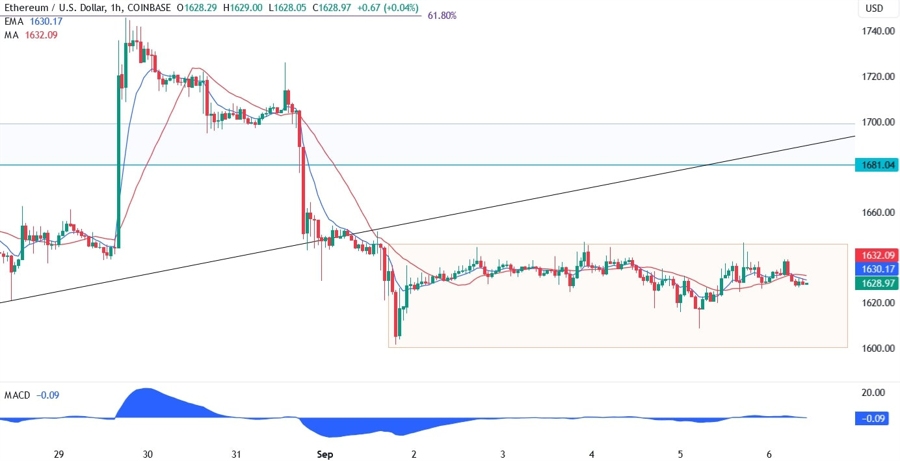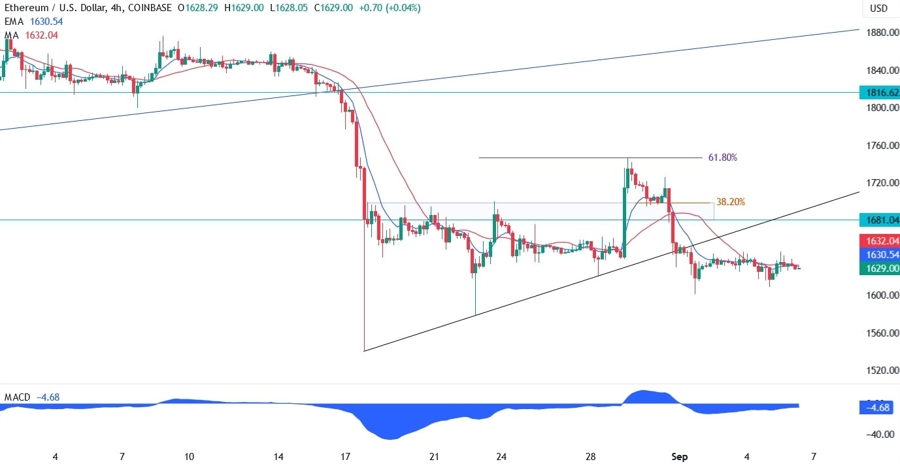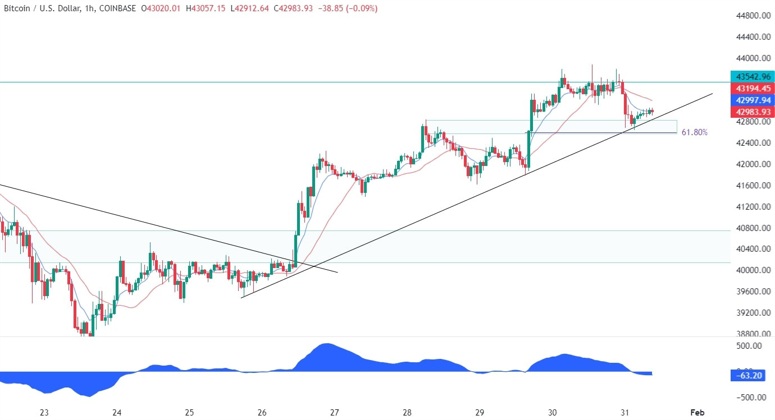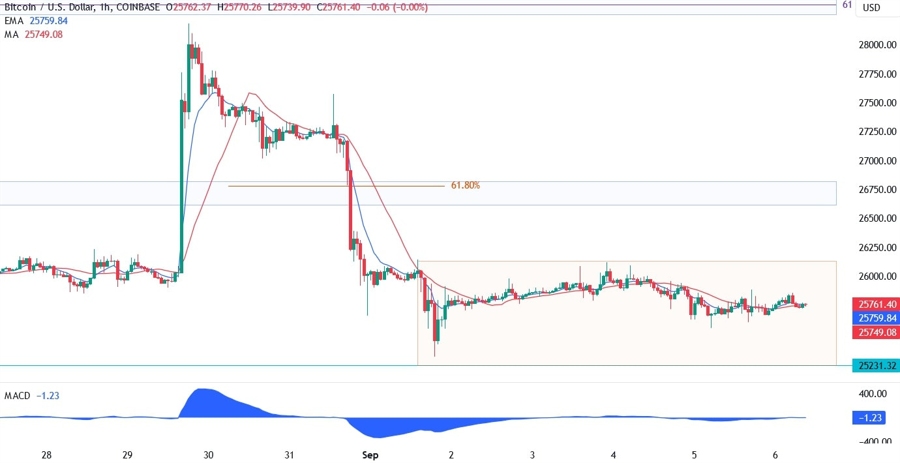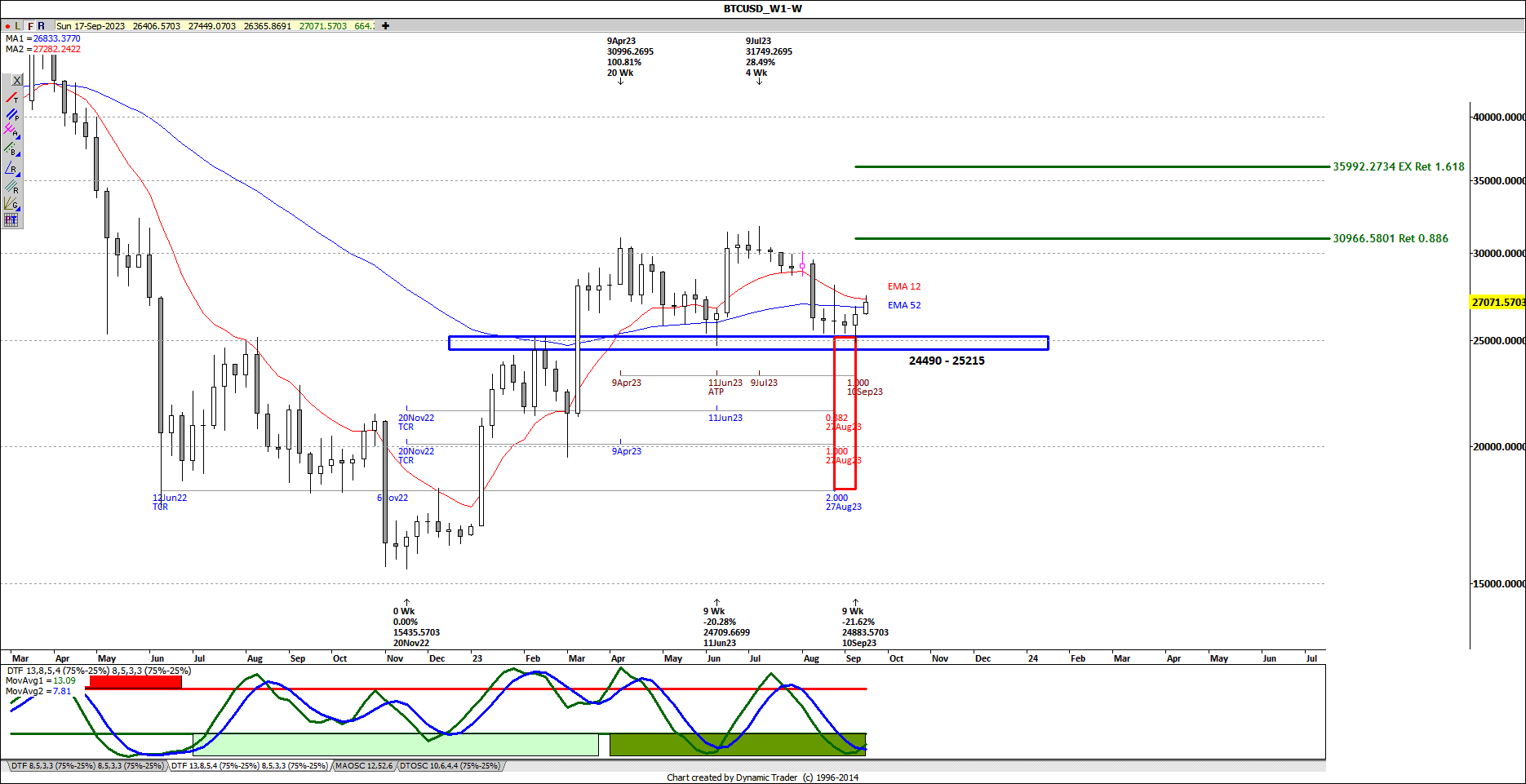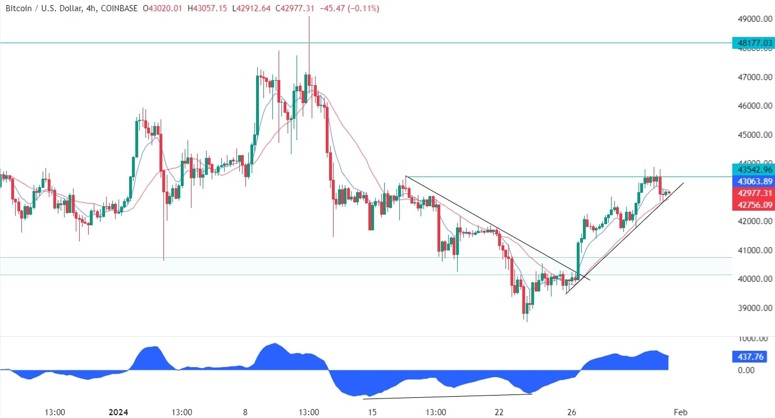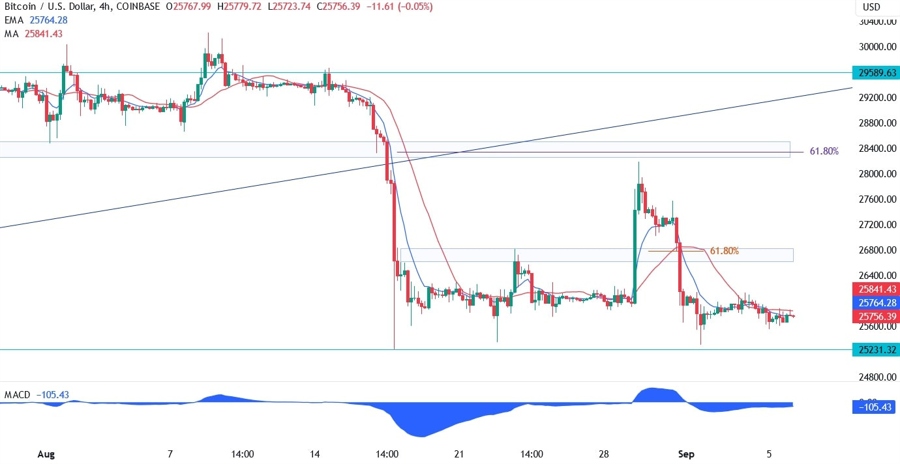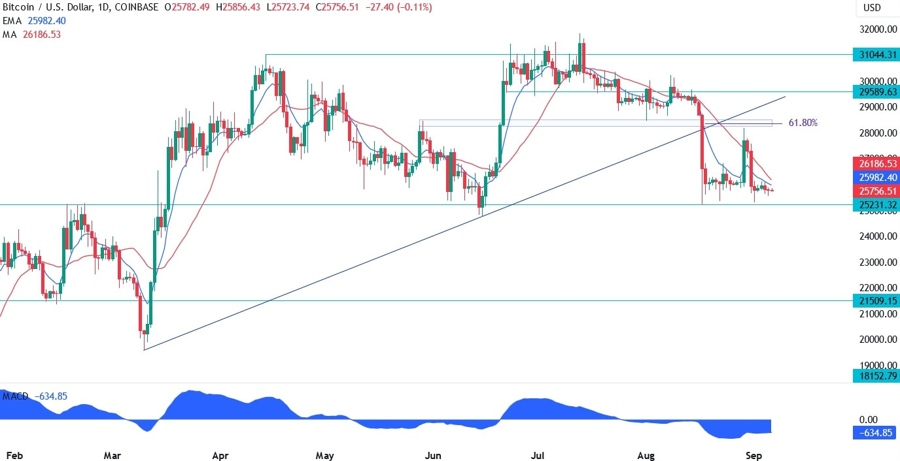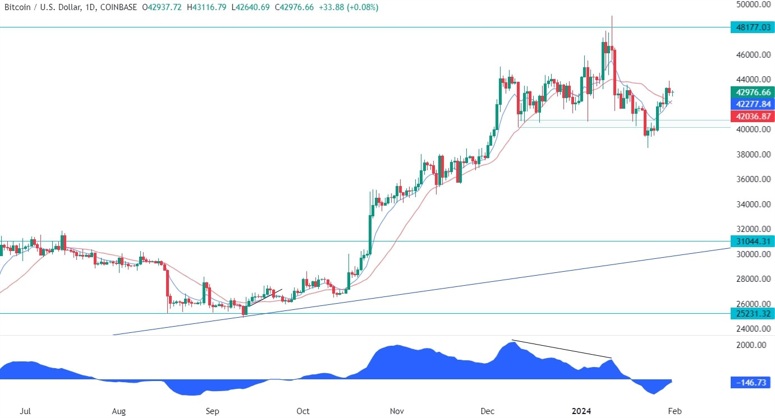-
COUNTRIES:
-
PAIRS THAT CORRELATE:
-
2022 HIGHS & LOWS:
-
COUNTRIES:
-
PAIR TYPE:
ONE-YEAR CHART:
Table of Contents:
- Introduction
- What is EOSUSD?
- How does EOSUSD work?
- Advantages of EOSUSD
- Disadvantages of EOSUSD
- Conclusion
Introduction
EOSUSD is a cryptocurrency trading pair that represents the value of EOS (a blockchain-based platform for decentralized applications) in relation to the US dollar. In this article, we will explore what EOSUSD is, how it works, and its advantages and disadvantages.
What is EOSUSD?
EOSUSD is a trading pair that allows traders to speculate on the price movements of EOS against the US dollar. This means that if the value of EOS increases relative to the US dollar, traders can profit by buying EOSUSD. Conversely, if the value of EOS decreases relative to the US dollar, traders can profit by selling EOSUSD.
How does EOSUSD work?
EOSUSD works similarly to other trading pairs in the cryptocurrency market. Traders can buy or sell EOSUSD on exchanges like Binance, Bitfinex, and Kraken. The price of EOSUSD is determined by supply and demand on these exchanges, as well as external factors like news and market sentiment.
Advantages of EOSUSD
- Traders can profit from the price movements of EOS without actually owning EOS tokens
- EOSUSD is accessible to anyone with an internet connection, making it a globally accessible investment opportunity
- The cryptocurrency market operates 24/7, providing traders with ample opportunities to buy and sell EOSUSD at any time
Disadvantages of EOSUSD
- The cryptocurrency market is highly volatile, meaning that the value of EOSUSD can fluctuate rapidly and unpredictably
- The lack of regulation in the cryptocurrency market makes it more susceptible to fraud, scams, and hacking
- Traders may be subject to high fees and taxes when buying or selling EOSUSD on exchanges
Conclusion
EOSUSD presents an investment opportunity for traders who want to speculate on the price movements of EOS without actually owning EOS tokens. However, like all investments, EOSUSD comes with risks and potential downsides. Traders should carefully consider these factors before investing in EOSUSD or any other cryptocurrency.
Table of Contents
- Introduction
- EOSUSD
- What is EOS?
- History of EOS
- Use cases for EOS
- Advantages of EOS
- Disadvantages of EOS
- Conclusion
Introduction
EOS is a blockchain technology that was designed to provide decentralized application (dApps) developers with an easy-to-use platform to build and deploy their applications. The EOS blockchain runs on the EOSIO software, which was developed by Block.one.
EOSUSD
EOSUSD is the trading pair that represents the price of EOS in US dollars. It is one of the most popular pairs for traders who are interested in buying or selling EOS.
What is EOS?
EOS is a decentralized blockchain technology that provides developers with a platform to create and deploy dApps. EOS is designed to be fast, scalable, and user-friendly, which sets it apart from other blockchain technologies like Bitcoin and Ethereum.
History of EOS
The EOS project was founded by Dan Larimer, who is also the creator of other blockchain projects like BitShares and Steem. The EOS ICO was launched in June 2017, and it raised a total of $4 billion in funding. The EOS mainnet was launched on June 14, 2018.
Use cases for EOS
EOS can be used for a variety of dApps, including social media platforms, online marketplaces, and gaming applications. Because of its fast transaction speeds and scalability, EOS is an attractive option for developers who want to create large-scale dApps that can handle a high volume of user activity.
Advantages of EOS
- Fast transaction processing speed
- Scalability
- User-friendly platform
- Low transaction fees
- High level of security
- Large community of developers
Disadvantages of EOS
- Centralized ownership structure
- Requires a high degree of technical expertise to use and develop on the platform
- Controversial ICO process
Conclusion
EOS is a blockchain technology that offers a range of benefits for dApp developers, including fast transaction speeds, scalability, and a user-friendly platform. While there are some concerns about its centralization and ICO process, many developers and investors see it as a promising option for building decentralized applications in the future.
Table of Contents
Introduction:
The cryptocurrency market continues to grow and evolve with new tokens being introduced every day. EOS and US Dollar (EOSUSD) are two of the most popular cryptocurrencies being traded today. This article will provide an overview of what each of these currencies is, and then compare them to each other in terms of their features, advantages, and overall performance.
What is EOS?
EOS is a blockchain-based platform that was designed to support decentralized applications (DApps) and smart contracts. It was created by Block.one and launched in 2018. EOS aims to be a more scalable and user-friendly alternative to Ethereum, which is currently the leading platform for DApps.
What is US Dollar?
The US Dollar is the official currency of the United States of America and is one of the most widely traded currencies in the world. The US Dollar is used as the standard currency for international transactions and is also the reserve currency for many countries.
EOS vs US Dollar Comparison:
| Criteria | EOS | US Dollar |
|---|---|---|
| Type | Cryptocurrency | Fiat currency |
| Market Cap (as of September 2021) | $4.7 billion | N/A |
| Transaction Speed | Up to 100,000 transactions per second | Depends on the payment method used |
| Decentralization | Fully decentralized | Centralized (controlled by the Federal Reserve) |
| Volatility | High | Low |
Conclusion:
In conclusion, both EOS and US Dollar have their own unique features and advantages. EOS is a cryptocurrency that offers fast transaction speeds and decentralization, while US Dollar is a fiat currency that is widely accepted around the world. It ultimately depends on individual preferences and needs when deciding which currency to use for investment or everyday transactions.
Table of Contents
- Introduction: Understanding EOS and USD
- EOS as a Cryptocurrency: Definition and Overview
- USD as a Currency: Definition and Overview
- EOS vs USD: Differences in Functionality and Use Cases
- Market Analysis: Historical and Current Trends for EOS/USD
- Factors Affecting EOS/USD: Key Drivers and Influencers
- Trading Strategies: Tips for Investing in EOS/USD
- Conclusion: The Future of EOS/USD
Let’s dive deeper into the world of EOS and USD, two prominent digital assets that have captured the attention of investors and traders around the globe.
Introduction: Understanding EOS and USD
Before we compare and contrast EOS and USD, it’s important to understand what each one is and how they function within the broader ecosystem of finance and technology.
EOS as a Cryptocurrency: Definition and Overview
EOS is a popular cryptocurrency that was first launched in 2017. It is designed to support decentralized applications (dApps) and smart contracts on the blockchain, with faster transaction speeds and lower fees than many other cryptocurrencies.
USD as a Currency: Definition and Overview
The United States Dollar (USD) is the official currency of the United States and is also widely used around the world as a reserve currency. It is backed by the US government and is often viewed as a safe-haven asset in times of economic uncertainty.
EOS vs USD: Differences in Functionality and Use Cases
While EOS and USD may seem very different on the surface, they both have important roles to play in the world of finance and technology. EOS is primarily used for decentralized applications and smart contracts, while USD is used for everyday transactions and as a store of value. However, both assets can be traded on exchanges and used for investment purposes.
Market Analysis: Historical and Current Trends for EOS/USD
To understand the performance of EOS/USD over time, it’s important to look at historical trends and current market conditions. This can help investors make informed decisions about when to buy or sell these assets.
Factors Affecting EOS/USD: Key Drivers and Influencers
There are many factors that can impact the price of EOS and USD, including technological developments, market forces, and geopolitical events. Understanding these drivers and influencers is crucial for anyone looking to invest in these assets.
Trading Strategies: Tips for Investing in EOS/USD
If you’re interested in trading EOS/USD, there are a number of strategies that you can use to maximize your returns. These may include technical analysis, fundamental analysis, and risk management techniques.
Conclusion: The Future of EOS/USD
As the worlds of finance and technology continue to evolve, EOS and USD are likely to play increasingly important roles. By staying up-to-date on market trends and employing effective investment strategies, you can position yourself for success in the exciting world of digital assets.
EUR ADDITIONAL INFO
-
COUNTRY:
-
CENTRAL BANK:
-
NICKNAME:
-
%OF AVERAGE DAILY TURNOVER:
Crypto
- BTCEUR-Bitcoin vs Euro
- BTCUSD-Bitcoin vs US Dollar
- Aavegotchi: Aavegotchi Vs USD : GHST
- AAVEUSD Aave Token vs US Dollar
- AAVEUSD Aave Token vs US Dollar
- ADAUSD: Cardano Vs USD
- AxieI: AxieInfinityShards Vs USD : AXSUSD
- BATUSD Basic Attention Token vs US Dollar
- BATUSD Basic Attention Token vs US Dollar
- BCHUSD: Bitcoin Cash US Dollar
- BNBUSD Binance Coin (USD)
- BTC/CNH - Bitcoin Chinese vs Yuan Offshore
- BTCJPY-Bitcoin vs Yen
- BTCKRW Bitcoin vs South Korea Won
- CAKEUSD PancakeSwap Token vs US Dollar
- COMPUSD Compound Token vs US Dollar
- DOGEUSD Dogecoin Token vs US Dollar
- DOTUSD-DOT vs US Dollar
- DSHUSD-Dashcoin vs US Dollar
- ENJUSD Enjin Coin Token vs US Dollar
- EOSUSD EOS vs US Dollar
- ETHBTC-Ethereum vs Bitcoin
- ETHUSD-Ethereum vs US Dollar
- FILUSD Filecoin Token vs US Dollar
- HBARUSD Hedera Hashgraph Token vs US Dollar
- HTUSD Huobi Token vs US Dollar
- IOSTUSD IOSToken vs US Dollar
- LINKUSD ChainLink Token vs US Dollar
- LNKUSD: LNK vs US Dollar : Chain Link
- LTCBTC-Litecoin vs Bitcoin
- LTCEUR-Litecoin vs Euro
- LTCJPY-Litecoin vs Yen
- LTCUSD-Litecoin vs US Dollar
- MANAUSD Decentraland Token vs US Dollar
- MATICUSD Polygon Token vs US Dollar
- SNXUSD Synthetix Network Token vs US Dollar
- SOLUSD: Solana Token vs US Dollar
- THETAUSD Theta Network Token vs US Dollar
- UNIUSD-Uniswap (USD)
- XLMUSD XLM vs US Dollar : Stellar vs US dollar
- XRPUSD-Ripple vs US Dollar
- XTZUSD Tezos (USD)
Fundamental Summary
- Coming soon!!

